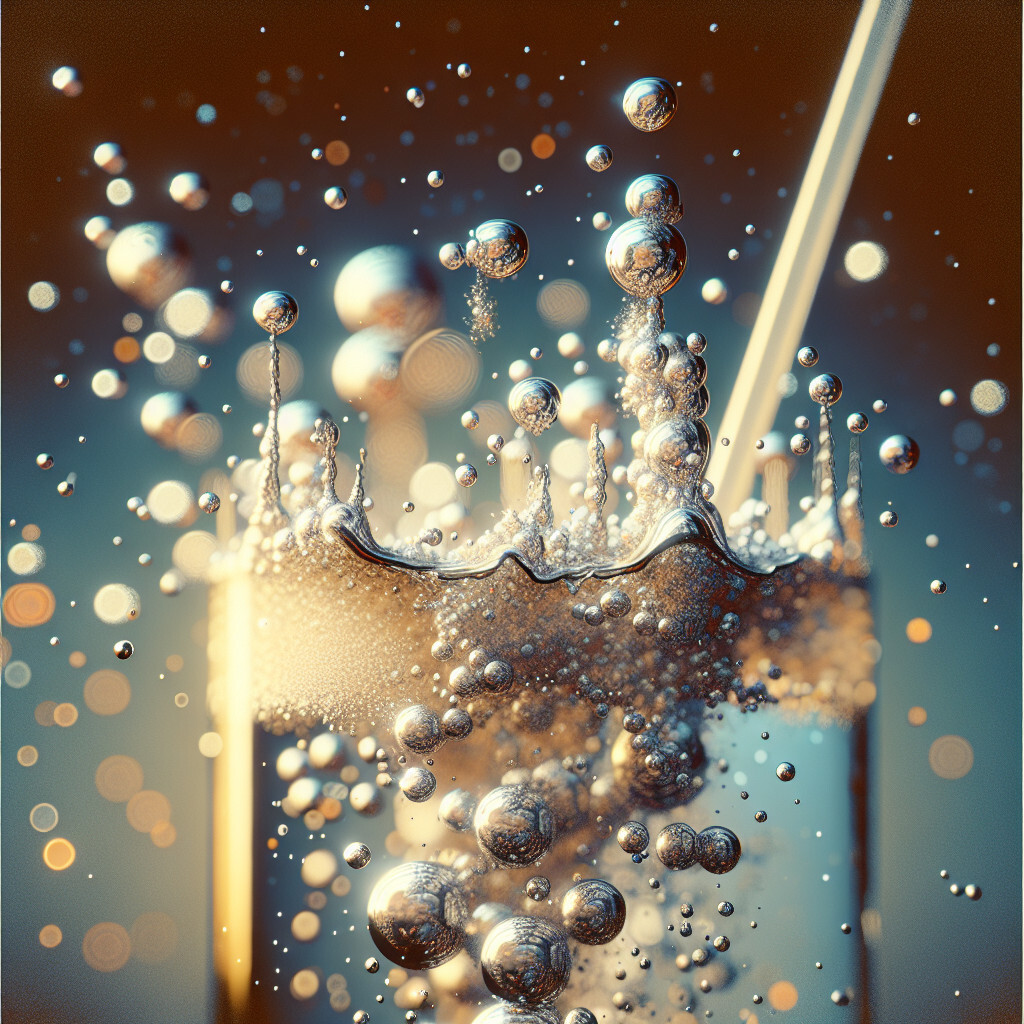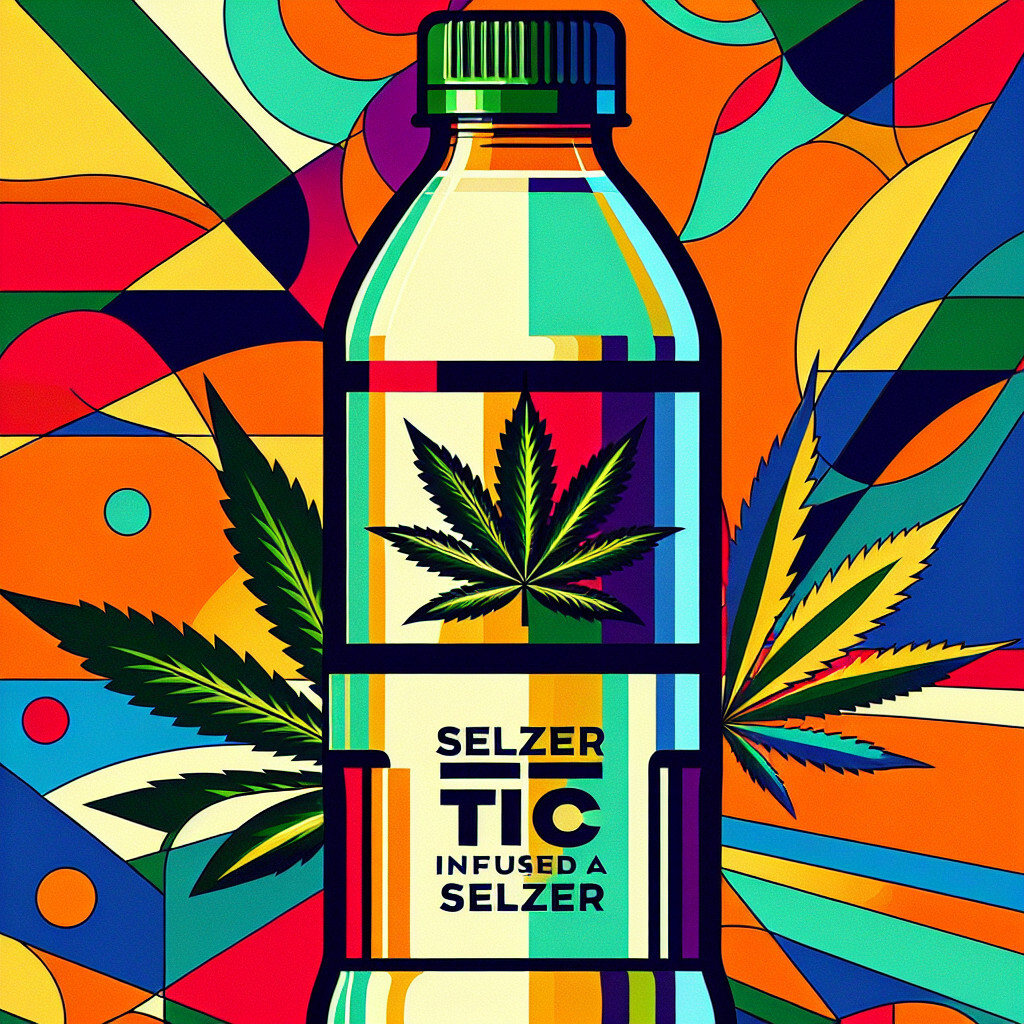-
Table of Contents
“Refreshment in Every Sip: Tonic Water 1.5 Liter”
Introduction

Tonic water 1.5 liter is a large bottle of carbonated soft drink that contains quinine, a substance used to treat malaria. It is often used as a mixer in alcoholic beverages, particularly gin and vodka. The bitter taste of the quinine is balanced with sweeteners to create a refreshing beverage that can be enjoyed on its own or used to enhance the flavors of a cocktail. The 1.5 liter size is perfect for parties or gatherings, ensuring there is plenty to share.
Exploring the Health Benefits of 1.5 Liter Tonic Water
Tonic water, a carbonated soft drink, has been a staple in many households for centuries. It is often enjoyed on its own or as a mixer in cocktails, particularly the classic gin and tonic. However, beyond its refreshing taste and effervescence, tonic water also offers a range of health benefits. This article will delve into the health benefits of consuming 1.5 liters of tonic water.
Tonic water’s primary ingredient is quinine, a compound extracted from the bark of the cinchona tree. Quinine has been used for centuries to treat malaria, a disease caused by parasites that enter the body through the bite of a mosquito. The World Health Organization still recommends quinine as a treatment for severe malaria, particularly in regions where the disease is resistant to other drugs. Therefore, consuming tonic water in moderate amounts can provide a small dose of this antimalarial compound.
In addition to its antimalarial properties, quinine has also been found to have analgesic and anti-inflammatory effects. This makes tonic water a potential aid in relieving pain and reducing inflammation. Some people find that drinking tonic water helps alleviate leg cramps and restless leg syndrome, although more research is needed to confirm these effects.
Tonic water is also a source of hydration. Like all beverages, it contributes to your daily fluid intake, helping to prevent dehydration. Dehydration can lead to a variety of health problems, including headaches, fatigue, and impaired physical performance. Therefore, drinking tonic water can help ensure you stay adequately hydrated, especially in hot weather or after physical activity.
Furthermore, tonic water is typically fortified with minerals such as sodium and potassium. These electrolytes are essential for maintaining fluid balance in the body, supporting nerve function, and regulating muscle contractions. Consuming tonic water can therefore contribute to your daily intake of these important nutrients.
However, it’s important to note that tonic water also contains sugar, which can contribute to weight gain and other health problems if consumed in excess. Some brands offer diet or low-sugar versions of tonic water, which can be a healthier choice for those who want to enjoy the benefits of tonic water without the added sugars.
While the health benefits of tonic water are promising, it’s important to consume it in moderation. The amount of quinine in tonic water is much lower than the doses used to treat malaria or other conditions, and consuming too much can lead to quinine toxicity, which can cause nausea, headaches, and other symptoms. Therefore, it’s recommended to limit your intake to a reasonable amount, such as 1.5 liters per day.
In conclusion, tonic water is more than just a refreshing beverage or cocktail mixer. It offers a range of health benefits, from providing a small dose of the antimalarial compound quinine, to contributing to hydration and electrolyte intake. However, like all foods and beverages, it should be consumed in moderation as part of a balanced diet. So, the next time you reach for a drink, consider choosing tonic water. Not only will you enjoy its unique, bitter-sweet taste, but you’ll also be doing something good for your health.
The History and Evolution of 1.5 Liter Tonic Water
Tonic water, a carbonated soft drink, has a rich history that dates back to the 19th century. It was initially used as a prophylactic against malaria, with its primary ingredient, quinine, being a natural remedy for the disease. The British in colonial India were the first to consume tonic water, mixing it with gin to mask the bitter taste of quinine. This combination gave birth to the classic gin and tonic cocktail, which remains popular to this day.
Over time, tonic water evolved from a medicinal drink to a common mixer in the beverage industry. The original tonic water contained a high concentration of quinine, which gave it a distinctly bitter taste. However, as it transitioned into a mixer for alcoholic beverages, the quinine content was significantly reduced to make it more palatable. Modern tonic water now contains just a trace of quinine, enough to retain its characteristic flavor but not enough to have any medicinal effect.
The evolution of tonic water also saw a change in its packaging and quantity. Initially, it was sold in small glass bottles, similar to those used for medicines. However, as its popularity grew, manufacturers began to produce it in larger quantities to meet the increasing demand. This led to the introduction of the 1.5-liter bottle, a size that is now commonly found in supermarkets and liquor stores worldwide.
The 1.5-liter tonic water bottle offers several advantages. It is more economical, as it provides more servings per bottle, reducing the cost per serving. It is also more convenient for parties and gatherings, where large quantities of mixers are often needed. Furthermore, the larger bottle size reduces the amount of packaging waste, making it a more environmentally friendly option.
Despite these advantages, the 1.5-liter tonic water bottle has faced some criticism. Some consumers argue that once opened, the tonic water loses its fizziness before the entire bottle can be consumed. This has led some manufacturers to introduce smaller, single-serving bottles alongside the larger ones, catering to different consumer needs.
In recent years, there has been a resurgence in the popularity of tonic water, driven by the craft cocktail movement. This has led to the introduction of premium tonic waters, which often contain natural ingredients and come in a variety of flavors. These premium tonic waters are typically sold in smaller bottles, but some manufacturers have started to offer them in 1.5-liter bottles as well, catering to the demand for high-quality mixers in larger quantities.
In conclusion, the 1.5-liter tonic water bottle is a product of the evolution of tonic water from a medicinal drink to a popular mixer. It offers several advantages, including economy and convenience, but has also faced some criticism. Despite this, it remains a common sight in supermarkets and liquor stores worldwide, a testament to the enduring popularity of tonic water. As the beverage industry continues to evolve, it will be interesting to see what the future holds for this classic mixer.
How to Incorporate 1.5 Liter Tonic Water into Your Daily Diet
Tonic water, a carbonated soft drink, has been a staple in many households for years. It is known for its distinct bitter flavor, which is derived from quinine, a compound extracted from the bark of the Cinchona tree. While it is most commonly used as a mixer in alcoholic beverages, particularly gin and vodka, tonic water can also be incorporated into your daily diet in a variety of ways. This article will explore how to incorporate 1.5 liter tonic water into your daily diet.
Firstly, tonic water can be consumed as a standalone beverage. It is a refreshing drink that can be enjoyed at any time of the day. Its unique bitter taste can be a delightful change from the usual sweet or bland beverages. Moreover, tonic water is a low-calorie drink, making it a healthier alternative to sugary sodas. A 1.5 liter bottle can be conveniently stored in the refrigerator and consumed over several days.
Secondly, tonic water can be used as a mixer in non-alcoholic beverages. Its distinctive flavor can add a new dimension to your favorite drinks. For instance, you can mix tonic water with fresh fruit juices such as orange, lemon, or grapefruit to create a refreshing and tangy beverage. You can also use it to make homemade sodas by adding a splash of tonic water to your favorite fruit syrup or cordial. The possibilities are endless, and experimenting with different combinations can lead to the discovery of new favorite drinks.
In addition, tonic water can be used in cooking. It can be used as a substitute for water or other liquids in various recipes to add a unique flavor. For example, you can use tonic water in place of regular water when making dough for bread or pizza. The carbonation in the tonic water can help to make the dough lighter and fluffier. You can also use tonic water to deglaze a pan after sautéing meat or vegetables, adding a subtle bitter flavor to the dish.
Furthermore, tonic water can be used in baking. It can be used as a substitute for water or milk in cake or muffin recipes. The carbonation in the tonic water can help to make the baked goods lighter and more tender. You can also use tonic water to make a glaze for cakes or pastries, adding a unique flavor that complements the sweetness of the baked goods.
Lastly, tonic water can be used to make ice cubes. These can be added to your favorite beverages to add a subtle bitter flavor. This can be particularly refreshing in the summer months when you want a cold drink with a bit of a kick.
In conclusion, there are many ways to incorporate 1.5 liter tonic water into your daily diet. Whether you choose to drink it as a standalone beverage, use it as a mixer in non-alcoholic beverages, use it in cooking or baking, or use it to make ice cubes, tonic water can add a unique flavor to your meals and drinks. So, why not give it a try and see how you can make tonic water a part of your daily diet?
Comparative Review of Top Brands Selling 1.5 Liter Tonic Water
Tonic water, a carbonated soft drink, has been a staple in many households for decades. It is often used as a mixer in alcoholic beverages, particularly in gin and tonic, but can also be enjoyed on its own. The market is flooded with numerous brands selling tonic water, each with its unique taste and quality. This article aims to provide a comparative review of the top brands selling 1.5 liter tonic water.
Schweppes, a brand with a long-standing reputation, is one of the most popular choices when it comes to tonic water. Their 1.5 liter tonic water is known for its perfect balance of sweetness and bitterness, derived from quinine, a key ingredient in tonic water. Schweppes tonic water also contains a hint of citrus, which adds a refreshing twist to its taste. It is carbonated just enough to give it a pleasant fizz without being overpowering.
On the other hand, Fever-Tree, a relatively new player in the market, has quickly gained popularity for its premium quality tonic water. Their 1.5 liter tonic water is made with natural quinine sourced from the Democratic Republic of Congo, which gives it a distinctively clean and crisp taste. Fever-Tree tonic water is less sweet than most other brands, making it an excellent choice for those who prefer a more bitter taste. It also boasts a high level of carbonation, which adds to its refreshing quality.
Canada Dry, another well-known brand, offers a 1.5 liter tonic water that is loved for its smooth and subtle flavor. Unlike other brands, Canada Dry tonic water is not overly sweet or bitter, making it a versatile mixer for a variety of drinks. It has a moderate level of carbonation, which gives it a pleasant mouthfeel without being too fizzy.
Lastly, Q Mixers, a brand that prides itself on using only the best ingredients, offers a 1.5 liter tonic water that stands out for its bold and robust flavor. Q Mixers tonic water is made with organic agave for sweetness and handpicked quinine for bitterness, resulting in a rich and complex taste. It has a high level of carbonation, which enhances its flavor and makes it an excellent mixer for strong spirits.
In conclusion, each of these brands offers a unique take on tonic water, catering to different taste preferences. Schweppes is a great choice for those who enjoy a balanced taste with a hint of citrus, while Fever-Tree is perfect for those who prefer a clean and crisp taste with a high level of carbonation. Canada Dry is ideal for those who want a smooth and subtle flavor that can blend well with any drink, and Q Mixers is suitable for those who appreciate a bold and robust flavor with a high level of carbonation. Regardless of your preference, each of these brands offers a high-quality 1.5 liter tonic water that can enhance your drinking experience.
Q&A
1. Question: What is tonic water?
Answer: Tonic water is a carbonated soft drink that contains quinine, which gives it a bitter taste. It’s often used as a mixer in alcoholic beverages, particularly gin and tonic.
2. Question: How many servings are in a 1.5 liter bottle of tonic water?
Answer: A standard serving size for tonic water is about 250ml, so a 1.5 liter bottle would contain approximately 6 servings.
3. Question: Does tonic water have any health benefits?
Answer: Tonic water contains quinine, which has been used to treat malaria. However, the amount of quinine in tonic water is significantly less than a therapeutic dose. It’s also a source of hydration due to its water content.
4. Question: Can tonic water be consumed on its own?
Answer: Yes, tonic water can be consumed on its own, although it has a bitter taste due to the quinine. Some people enjoy it as a standalone beverage, while others prefer to mix it with other drinks to balance out the bitterness.
Conclusion
Tonic water in a 1.5 liter quantity is a substantial amount, typically used for mixing drinks, particularly those with gin for a classic gin and tonic. It contains quinine, which gives it a bitter taste, and is often carbonated. It’s a popular choice for those who enjoy its unique flavor or need it for cocktail recipes.






